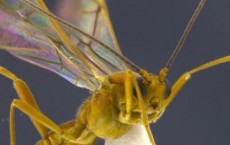
Could the brain's cerebral cortex provide some answers about intellectual development in youth with Down Syndrome?

A sixth mass extinction may have begun. Scientists have used highly conservative estimates to prove that species are disappearing faster than at any time since the time of the dinosaurs.

New findings published in Science Advances discuss a way to guide electric discharges and even possibly steer them around obstacles through the use of lasers.

New findings published in the Proceedings of the Royal Society B reveal that brain regions for central cognitive processing in social insect species actually shrank over time--the opposite pattern seen with sociality in other vertebrate animals, including mammals, birds and fish.

New findings published in the journal Sleep show that some sleep disturbances may ultimately be influenced by race and ethnicity. In fact, researchers found that sleep disturbances and undiagnosed sleep apnea seemed to occur more frequently in racial/ethnic minorities.

New findings published in the journal Scientific Reports show a connection between cocaine use and potential HIV infection.

New findings presented at the American Headache Society examine a new class of drugs called Calcitonin Gene-Related Peptide (CGRP) monoclonal antibodies. Research shows that the drugs are promising in the treatment of high-frequency episodic migraines and chronic migraines.

New findings published in the journal Addictive Behaviors shows that putting the right warning labels on cigarettes can help to better address the problem, reducing the number of potential consumers. Previous studies have shown just how cigarette prices and images hold a direct impact on whether or ...

Scientists at the National Institute of Health (NIH) have created a "placenta-on-a-chip" device that mimics both the function and structure of the human placenta. Researchers say it is particularly important as the new device, which can be used to model the flow of waste and nutrients between a moth...

Using the Hubble Space Telescope's infrared vision, astronomers have unveiled some of the previously hidden origins of quasars, the brightest objects in the universe.

New research led by scientists at The Scripps Research Institute (TSRI), International AIDS Vaccine Initiative (IAVI) and The Rockefeller University show tremendous headway regarding a potential human immunodeficiency virus (HIV) vaccine. The findings are published in the journal Cell and Science.

Supermassive black holes can be found at the centers of every large galaxy. Now, ALMA has managed to "weigh" one of these supermassive black holes.